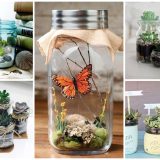Coffee Grounds – Six Practical Ways to Reuse Them
It is a “resource” we have in abundance and that we throw away without thinking for a minute this could be used at home. Below are several very good reasons not to throw away coffee grounds anymore and find practical uses that can help you in the day to day life.
First of all, if you have a garden, you should know coffee grounds is a very good natural fertilizer, being very rich in nutrients that your acidic-loving plants will absorb immediately. So use the coffee grounds by sprinkling it at the base of rosebushes, azaleas, rhododendrons, evergreens, and camellias. It’s better to use grounds from a drip coffeemaker than the boiled grounds from a percolator. The drip grounds are richer in nitrogen, according to Rd.com
If you have pets that take your garden for their toilet, then a pungent mixture of orange peels and used coffee grounds spread around your plants should solve the issue, discouraging especially cats to venture among the plants for that reason. The mixture also serves as a good fertilizer.
Get rid of the heavy smell inside the fridge by using the same coffee grounds. Fill a few bowls with fresh coffee grounds and leave them inside overnight. For a more spectacular effect, add some vanilla drops to the grounds and the fridge will smell fresh the following day.
When you want to clean the ashes out of the fire place, make sure you sprinkle some fresh coffee grounds on them so that the dust is not raised and pollute the whole room.
For those in love with fishing, the coffee grounds bring another practical solution: a cup of coffee grounds mixed with soil will keep your worms alive for as much as you need. They like coffee almost as much as we do, and the nutrients in the grounds will help them live longer.
Coming back to the garden, those growing veggies behind the house should consider this small trick: mix carrot seeds with fresh coffee grounds which not only that it serves as nutrients for the soil, but its strong aroma repels maggots and another pests. You can use this tip with radish seeds as well.















